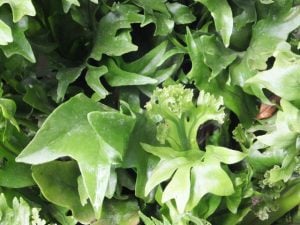A greenhouse or conservatory without much direct sunlight is not the perfect place for tender flowers, crops and many tropical plants. However even in the tropics there are damp shady cool places under the canopy and down in grottos and fissures. In those sites you find all sorts of ferns growing, often luxuriantly and many of these do exceptionally well under cover.
The Victorians loved ferns or Filices so much they built special shady glasshouses with tinted glass, and almost wiped out some British species with their persistent stealing from the wild. Huge collections were amassed and a visit to the fernery was as much a tour as to the orchid or palm house.

Anyway you do not have to devote a whole house to ferns as these so conveniently live in the shade cast by other plants and can fill otherwise barren dark corners. Being down in the shade gives them the cooler conditions they prefer. What they need though is moisture in that air, a dry atmosphere will make them prone to pests as well as dessication. Indeed this is why most ferns are not much used as house plants (see my previous blog on Dudder grass / Maidenhairs).
But given cool shade with moist air and winter temperatures kept above freezing (though not warm) then ferns create a lush foliage effect that is most pleasing and restful. And surprisingly interesting, there are so many shades of green, and the fronds come in a host of shapes. There are the typical ‘ferny’ Polypodiums through holly like Cyrtomiums to the weird flat stagshorns of Platyceriums and the tree like Cyatheas and Dicksonias.
Admittedly these all lack any colourful flowers, but these can be provided by other plants standing above or between the ferns (Anthuriums work really well). And sadly ferns offer no perfumes (wind pollinated you see) and very little culinary use. But their ease of culture makes up for these omissions. Basically a leaf-mould rich compost and rain-water is all they need. Ferns do not like water-logged compost though and best not to wet their fronds. They suffer few diseases and the only pests to watch out for are scales and mealy bugs.
You propagate ferns from spores but this usually takes a long time. Luckily most can be multiplied by division or by layering and a huge range of ready grown ones are available commercially. Start with such as the Birds Nest Asplenium nidus whose fronds resemble small banana leaves and the more feathery Asplenium bulbiferum, Cyrtomium falcatum the Holly fern, the Boston fern Nephrolepsis exaltata with yard long plumes, and the particularly easy almost bombproof Pteris cretica.


